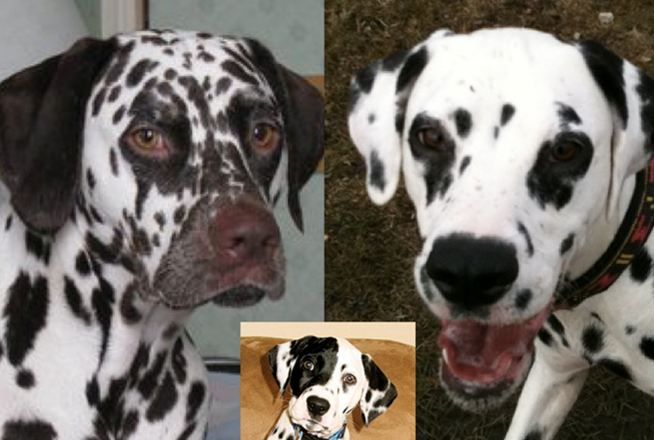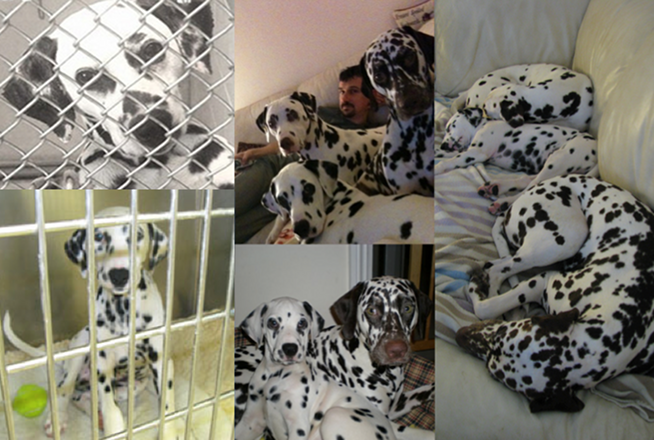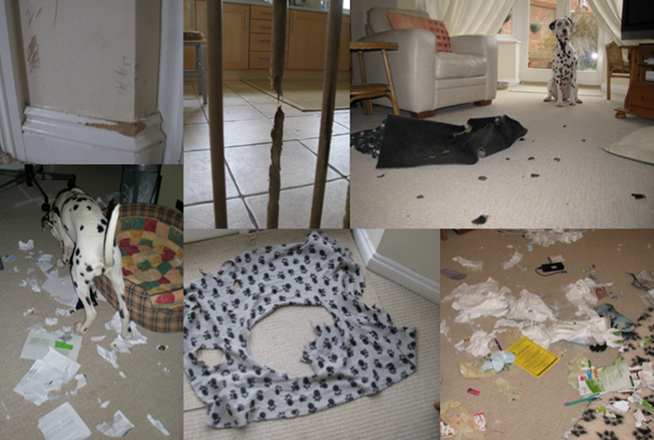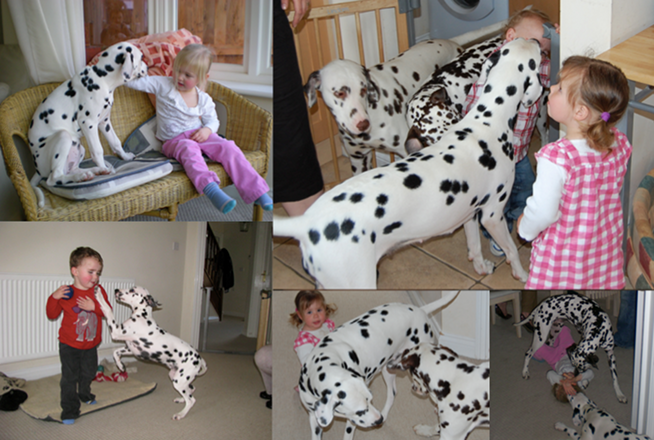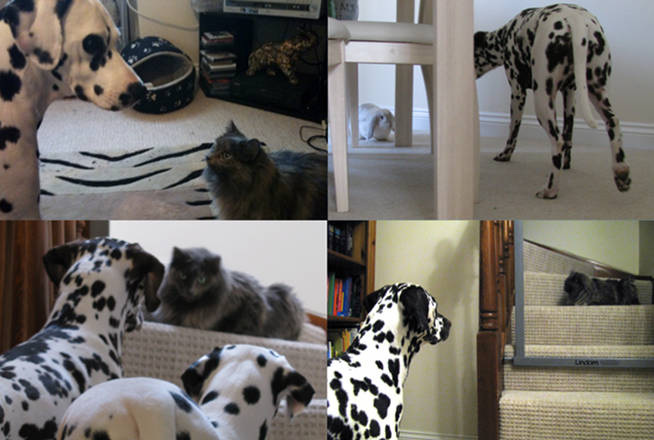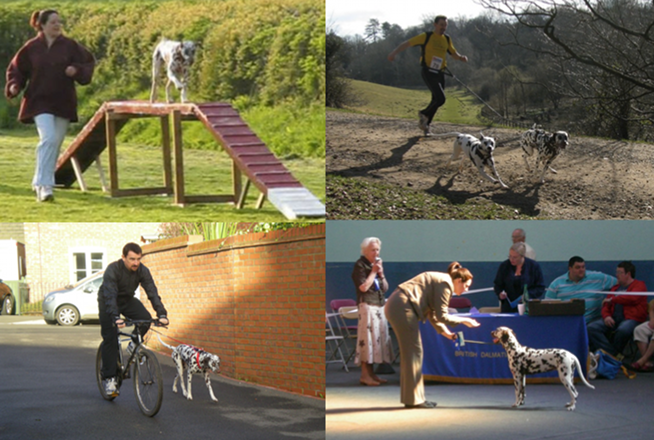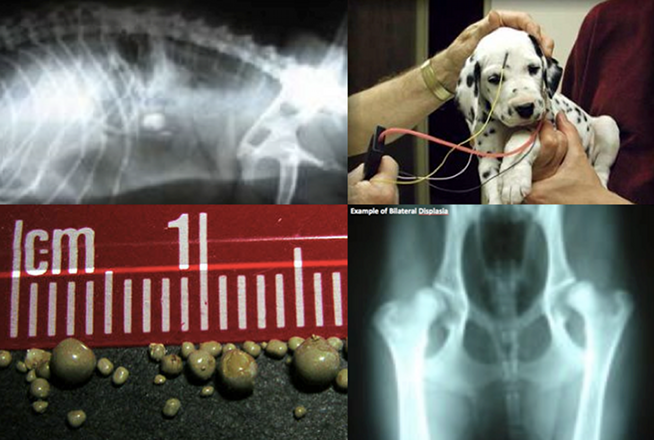Are you sure that a Dalmatian is the right companion for you and your family?
As you have probably seen already from the pages of this website, Dalmatians are pretty special but they are not the easiest of breeds to own and they are not necessarily the ideal breed for everyone.
Famous Dalmatian owners present and past include the singers Paula Abdul and Gloria Estefan; Queen Beatrix of the Netherlands and Sarah Ferguson, Duchess of York; film stars Marlon Brando, Ingrid Bergman, John Wayne and Rock Hudson, fashion designer Yves St Laurent and the former dictator of Argentina Juan Peron.
We speak with people about Dalmatians all of the time. Interestingly though, whether they are people struggling with some of the challenges that ultimately lead to a Dalmatian being re-homed, or people wanting to learn about Dalmatians before opening their home to one, the discussions are almost the same.
There are certain challenges which can become real problems if they are not recognised and managed from day one. Please contact the Breed Clubs, the Welfare Teams or us here at Schunikka to discuss them in full but, in the meantime, here is a summary of each:-
Challenge - Exercise
Many of the more common difficulties associated with an active breed like a Dalmatian can be traced to Exercise because a lack of proper physical and mental stimulation is not good for a dog with their energy levels.
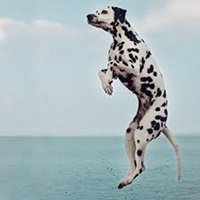
There is a lot of debate about the origins of the breed - are they hunting dogs from Greece and Crete or are they the spotted dogs illustrated on the walls of temples in ancient Egypt - the one thing everyone agrees on however, is that Dalmatians are bred to run. Their energy and stamina, combined with their natural affinity with horses, has led to them being used to run alongside carriages including the old horse-drawn beer Delivery Drays (the Anheuser Busch wagon always has a Dalmatian on it) and the old horse-drawn Fire Tenders (they are still used as mascots in American fire stations today).
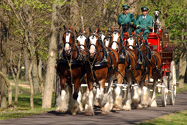
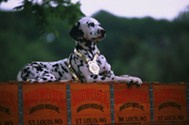
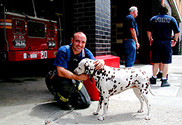
Whilst carriages are not used to transport people from town to town these days, they are still driven as a hobby by many people as a way to exercise horses and there are competitions and races most weekends. A major aspect of these events is the Carriage Dog Trials which can involve a range of events including a 25 mile run.

Website - www.carriagedog.org
The reason for explaining this is to illustrate the extent of a Dalmatian's natural fitness levels - if running with horses for 25 miles can't tire them out, what chance do you have strolling around the local park!
Their energy will build up and it has to be let out, every day or better still twice a day. With regular exercise, their behaviour is mellow and balanced and they like nothing better than to curl up on a sofa with you. Without adequate exercise, they will get fidgety, then frustrated, then they will fret!
Given that they were bred to run, the best possible exercise you can give them is to run with them. Get a "Springer" or some other Cycle Mount and go biking with your Dalmatian so that they can run alongside you. Alternatively, get a Harness for them and an elasticated lead with Waist Belt to absorb the pulling for you, and go running together. Check out the Running with Dogs organisations, like CaniX. They organise events most weekends (except the Summer) around the country at Forestry Commission locations where 100 or more dogs and their owners will run in staged races. For the more serious contender, there are even Exhibition runs at CRUFTS and European Championships.
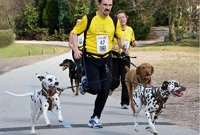
Website - www.canix.co.uk
So, if you have a Dalmatian and the challenges of bounciness and over-exuberance are getting too much for you, or if you are thinking of welcoming a Dalmatian into your home, then please give some thought to the level of physical and mental stimulation you can offer.
_________________________________________________________________________
Challenge - Temperament
Many books about dogs, about selecting the right breed and managing dog behaviour, will talk about the temperament of a dog as if it was as predetermined as the colour of it's fur. But Bull Terrier owners will gladly tell you about how their "dangerous dog" rolls around on the floor with their toddlers and the Internet is full of images of Rottweiler and Doberman guard dogs sharing their beds with bunny rabbits and kittens. At the same time, we see family pets from "safe breeds" such as Labradors, turning on their owners and having to be put down. So obviously, the issue of temperament is not black and white.
Perhaps if we think about temperament in terms of "Temper" then the challenge of managing it becomes simpler. Some things will calm a dog down and others will wind a dog up. Although the range of things that wind a dog up can vary a lot, the biggest one is always the same - it is YOU!
Your dog, will look to you - the Pack Leader - to gauge whether the way it is reacting to things is right or wrong, whether it will be rewarded or punished for it's behaviour. This means that every behaviour, however instinctive or deep rooted it seems to be (like chasing cats, barking at the postman, fighting other dogs, running away when off lead and chewing your shoes), can be interupted and amended with the correct responses and an effective reward regime.
Please note: I said Reward not Punishment. It has been conclusively proved that violence towards a dog will encourage violence in the dog (usually as a defence mechanism) so it should be avoided at all costs!

Dalmatians are actually very easy to train and handle. They have a reputation for being scatty, bouncy, exuberant and un-trainable. We have experienced this prejudice ourselves, when we took a Dalmatian to an Agility competition someone watching said "a Dalmatian, this should be fun to watch", and when we turned up at one puppy training school with a spotty little puppy we were told "you've got your work cut out there!".
We believe that a dog's behaviour is not a reflection of the breed - it is a reflection of the ability of the owner to encourage and manage the behaviours they want. We also believe that it is the responsibility of any dog owner to take classes - not "puppy classes or dog training classes" but "dog handler classes" to learn the skills needed to get the best out of your dog.
The Dalmatian is a very intelligent breed and this means that they will learn very quickly. This can be a blessing and a curse!
If you are teaching your Dalmatians all the right things then this intelligence will be a big help. However, it is very easy to inadvertently teach your Dalmatian the wrong things. For example, imagine that your Dally has just done something - like pulled something off the counter, or jumped up at the table, or pinched a shoe (as ours do a lot!) - the dog will immediately look to you to gauge your reaction to what he has just done. If you ignore it, or laugh at it, or even just turn away, then your Dalmatian will take your response as approval and will therefore "learn" that this is acceptable behaviour. This means that even by doing nothing, you are still "teaching" your Dalmatian!
Dalmatians are "thinking dogs". This means that they will not learn a behaviour once and do it over and over again without question. There are a lot of breeds which have this kind of intelligence and they are considered highly "trainable". Dalmatians are able to think things through and this means that you can teach them something, they will do it a number of times but then you will need to teach it to them again or "remind them" of why they are doing it. Many dog trainers think that this makes them "untrainable" but this is a lack of understanding of the true intelligence of the Dalmatian.
To see just how much can be taught to a Dalmatian, by a skilled and knowledgeable dog handler, take a look at the Dashing Dalmatians Display Team.
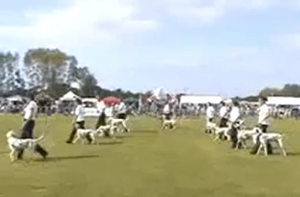
Website - www.youtube.com/watch?v=BFilEJVFdmQ&feature=related
There are a lot of good Behaviourists and Handling Trainers around the country. Two are that are definitely worthy of a mention when it comes to Dalmatians are:-
Jabberwock Dog Training Club
in the South
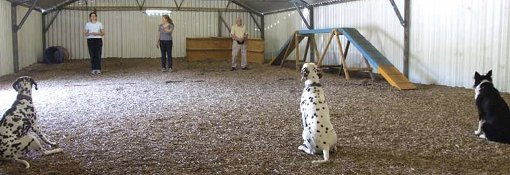
Website - www.zyworld.com/jabbawockdalmatians/dogclub.htm
Paws Training
in the North

Website - www.paws-training.com
So, if you have a Dalmatian and the challenges of temperament and behaviour are getting too much for you, or if you are thinking of welcoming a Dalmatian into your home, then please take some time to learn the skills of dog handling and dog training and make sure you constantly positively reinforce the behaviours you want.
_________________________________________________________________________
Challenge - Health
Dalmatians are generally very fit and healthy dogs. There are however some medical peculiarities that are prevalent in the breed and it is important that you learn as much about these as possible when deciding whether to welcome a Dalmatian into your family:-
Stones
Dalmatians can form crystals and stones in stagnant urine and the risk is higher in urine that is acidic (pH below 7). These are known as "urate" stones. Most other breeds of dogs form stones in alkaline urine (pH above 7) known as "struvite" stones and the prevention and treatment of these can be very different.

Step one of prevention is to make sure that urine is not stagnant in your Dalmatian for very long and that means allowing them to drink freely and wee often. This is one of the reasons why Dalmatians should not be left on their own for long periods of time.
Step two of prevention is to keep the acidity of the urine as low as possible. This is achieved by making sure that the dog food your Dalmatian eats is "low protein". More specifically, it should be "low in Purine" but not all dog food specifies this on its packaging.
The real danger is that crystals will grow into stones and stones will grow big enough to block the urinary tract. The boys, naturally, can "plug" up more easily than girls due to the physical difference in their urinary tract. For this reason it is highly recommended that boys are not neutered until they are at least 9-12 months old. A urinary obstruction can become life threatening within 24-48 hours as urine continues to collect in the bladder so watch your Dalmatian wee whenever you can to be sure that you quickly identify if they are having difficulties. It is also wise to have a urinalysis performed every year as part of your Dalmatian's routine heath check. It is also wise to check the pH at home. pH test strips are available at most pharmacies. The normal urine pH for a Dalmatian is 6.5 to 7.2. If your Dalmatian's urine pH is below 6.5, you should take a sample in to your vet for analysis.
For a more comprehensive explanation of Urate Stones, check out this useful website:-
Website - www.marvistavet.com
Deafness
The Dalmatian, despite the presence of pigmented spots, is basically a white dog and, like most white dogs (about 35 breeds in total), they have a notably high risk of congenital deafness.
It is important to state straight away that the Welfare Teams run by the Breed Club in the UK do not rehome deaf Dalmatians - so if you are reading this page because you are interested in adopting a Dalmatian through a Welfare Team, this will not be an issue for you. If, on the other hand, you have a Dalmatian which is deaf and you are struggling with the challenges involved, or if you are thinking of adopting a Dalmatian through a different organisation, then this information could be useful.
Although the association of deafness with white coat colour has long been recognised, veterinary researchers have been perplexed by the inheritance of the deafness component. Hearing dogs when mated together can produce deaf pups, but it has also been found that deaf dogs mated together can produce hearing pups.
Despite this, it has been shown in studies conducted both in the UK and America that selective breeding for hearing dogs can reduce the incidence of deafness. For this reason, reputable breeders do not breed from deaf Dalmatians and to identify which Dalmatians are deaf and which are not, puppies need to be tested.
The "BAER Test" (Brain-stem Auditory Evoked Response) allows unilaterally affected dogs (deaf in only one ear) to be distinguished from totally normal animals as well as those deaf in both ears which allows breeders choose which dogs to breed from and so reduce the incidence of deafness in their stocks.

For a full explanation of what a BAER Test involves, check out this useful website:-
Website - www.lsu.edu
Although the Dalmatian Breed Club Welfare teams do not rehome deaf Dalmatians, there are other organisations who do and these Dallies are just as much in need of loving homes as all other Dalmatians, provided that the adopters are prepared to accept the challenges associated with deafness and take the time to learn how to communicate with and train deaf dogs.
Here is the website of the most successful training and rehoming organisation in the UK:-
Website - www.deafdal.co.uk
Hips
Dalmatians do not have hip problems that are unique to the breed but they, like many breeds, are susceptible to Hip Dysplasia, a condition all medium and large dogs are prone to developing.
Hip Dysplasia is caused by a loss of contact between the femoral head of the femur bone and the pelvic bone. In a healthy hip joint, the femoral head will fit tightly inside the pelvic bone, held together by ligaments and connective tissues. In a worn or deformed hip, the femur does not fit snugly and so it can move around loosely pulling on muscles and ligaments and can even dislocate if the condition gets worse and this "popping in and out" causes extreme pain.
Abnormal walking, including an unusual gait and a reluctance to move are indicative of Hip Dysplasia it is diagnosed with a physical examination and an x-ray.
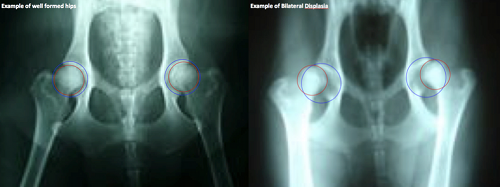
Hip Dysplasia is usually treated with surgery. Weight management is essential to preventing hip dysplasia along with low impact exercises that foster a healthy weight. Jogging and swimming are two of the best exercises for larger, older dogs prone to the problem. Also, memory foam beds help alleviate pressure on joints while sleeping.

For a more comprehensive explanation of Hip Dysplasia, check out this useful website:-
Website - www.peteducation.com
So, if you have a Dalmatian and health challenges are getting too much for you, or if you are thinking of welcoming a Dalmatian into your home, then please give some thought to these common problems.
_________________________________________________________________________
